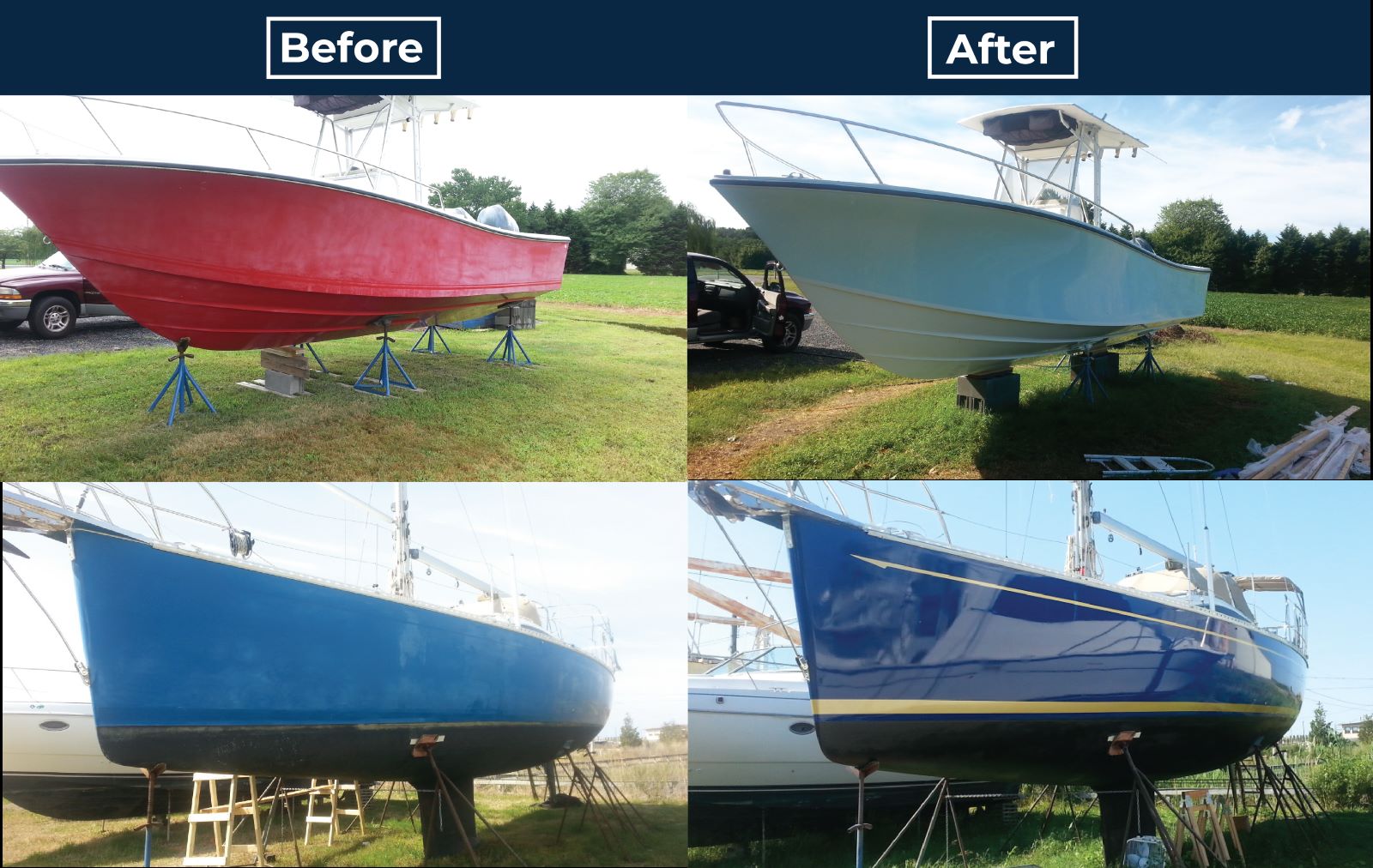How to paint a boat:
- Acquire necessary equipment and supplies.
- Remove damaged, flaking, or deteriorated existing coating
- Perform repairs and fairing where necessary
- Prep, sand, clean, and tape the area to be painted
- Apply Primer. Sand and clean.
- Apply paint.






































